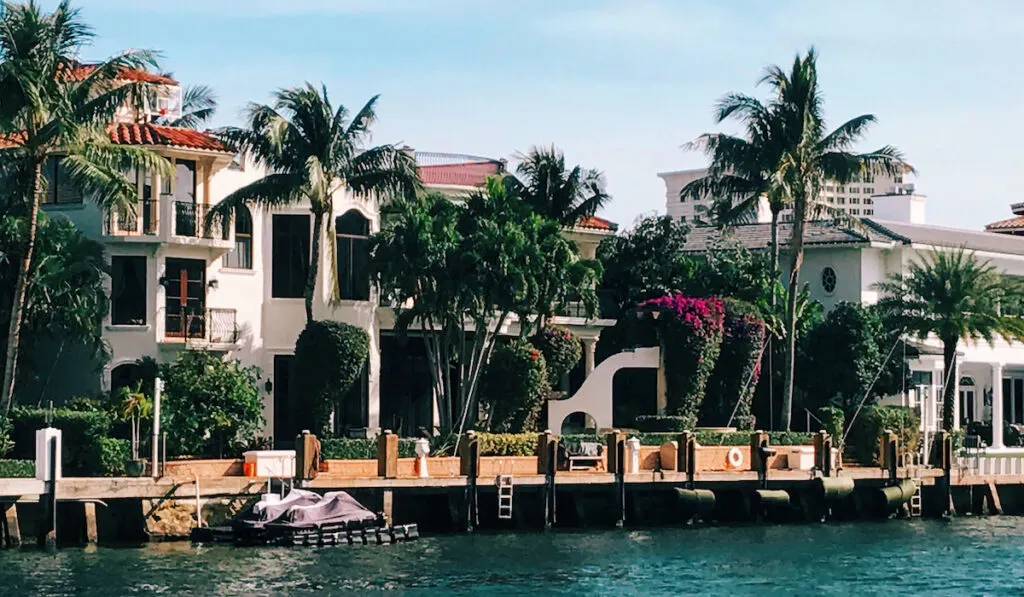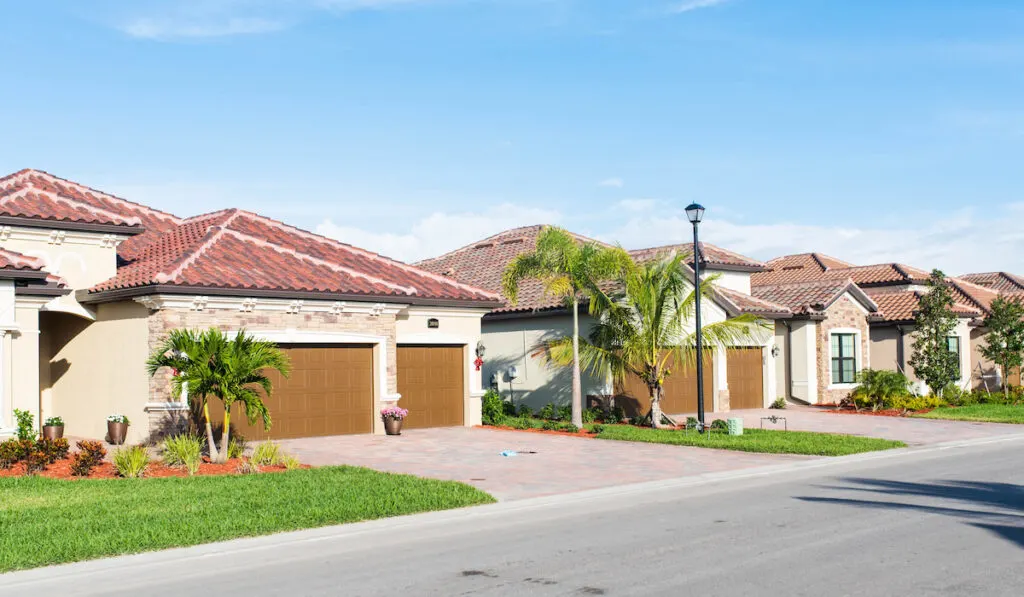Are you considering moving to the beautiful Sunshine State? Florida is a lovely place to live in, full of color, delicious food (like the famous Cuban sandwich), rich culture, striking scenery, and lots of places to dance and enjoy yourself. Regardless of the fair share of mad stories we get from Florida on the news, the state offers a great quality of life, plenty of rays and tons of fun! And what can be wrong about that?
But before purchasing any property there, you need to be savvy on the Earth’s rotation around the Sun and how this will affect you. Wait, what?

As you know, location is everything. When moving to Florida it’s crucial to consider which direction your new house should face.
Why? Because living here means just about 365 bright, sunny days, and lots of heat. You want to take advantage of the natural light, of course, but at the same time, you want enough shade to control the amount of daylight and heat inside and outside your home. In other words, where your home sits in relation to the Sun can make a big difference.
Depending on the property’s position, you may be able to take advantage of the seasonal temperature, maximize its potential, save money and energy throughout the year.
Of course, another important factor for this is your daily routine and expectations from the house. Maybe you’re an early bird and want to enjoy your morning coffee sitting on your lanai. Or you want to sunbathe by your pool with friends.
Perhaps you have kids that are looking forward to playing outside all day. Your lifestyle and where the Sun hits your home should be the two most important factors that determine what property you will purchase/rent.
Let’s get a little scientific. The amount of light and temperature coming in will depend on the Earth’s rotation and the orientation of the building. Florida is in the Northern Hemisphere. This means that sunlight there emanates from the south, although keep in mind that the Sun’s elevation might vary with seasonal changes (as much as 50o from summer to winter equinox). This is why knowing what to expect when your house faces north, south, east or west is important before signing the lease.
Table of Contents
Deciding on the Perfect Home Orientation for a Florida Residence
The best advice for taking advantage of the sunlight exposure in Florida is to focus on the direction the rear of the house faces. As I mentioned earlier, it depends on you and on what you are specifically looking for.
Base your decision on your routine. And remember, in Florida, the back yard is possibly the most important living area in the household, so it’s best to focus on your back yard activities, rather than on the ones you do on your front yard.

South Facing Florida Homes
During the summer, the sun rises in the northeast and sets on the west. All pools get some rays during the day, but the direction it faces will determine how much and when the light will hit them. If you have a pool that faces the east, meaning you will get the majority of the sun during the morning. If you have a pool facing south, you will have sun all day long.
Most homes in the state have their windows on the front and back since people want to take the sunlight inside. If you want the light to flow into the house, then the open concept style is best for you, which, fortunately, is a very popular style in Florida.
With an open concept home, there are no walls are dividing the living room, dining room, and kitchen. To go outdoors to the patio or pool area, choose to have large sliding glass doors for maximum light.
East & West Facing Florida Homes
East or west sun exposure will allow almost too much light in. You will want to consider that this much light will cause an increase in the temperature inside the house.
You are already living in a warm place, so cranking up the AC to keep cool might get costly. Tint your windows or regulate the amount of light with other shading strategies.
If you are considering a new home with lush gardening and plenty of trees to help keep things shaded, that will help out a lot when it comes to keeping things cool.
Do you want to enjoy the gorgeous sunsets? Your lanai should face west then, but be prepared for sunny, hot afternoons. A west-facing property will work as well if you like to enjoy your morning coffee on the patio while taking in the sunrise or love watching sunsets during dinner.
If you’re away from home during the day, choose a place facing east. This way, you can enjoy the sunset in the evening from your courtyard and relax after a hard day’s work. If you would love a bright and sunlit bedroom in the morning, make sure this room also faces east.
Considering Outdoor Activities
Regarding activities done at the rear of the house, a house facing south is great if you love gardening and want to develop your green thumb. If the front of the house is in this direction, it will get plenty of sunlight, but the patio will be in the dark.
This way, you’ll get a shady back yard with lush landscaping. We’re talking about Florida here, so it’s most likely you want to take advantage of the tropical weather and bask in the sun next to your pool. Maybe you have no pool, but you can add a hot tub, or if the lot is large, a pool area can be built where there is no shadow created by the building.
A pool that faces west will not get sunshine until noon. This sounds ok since outdoor activities normally start after lunch. The only downside is that the lanai will not get any shade for you to sit down, relax, and cool off, which is its whole purpose.
East-facing pools get sunlight during the morning hours, but once you reach the middle of the day, the shadow of the house will start to cover the area. It sounds like not much time left to sunbathe. A north-facing pool gets almost no sunbeams all through the day. Boring.
For a seasonal home, or if you’re home all day, or you expect guests (especially during vacation time), chose a house facing north. This way, your patio and pool deck will get golden rays from sunrise through sunset, year-round, especially during the summer months.

During the winter, the sun rises on the southeast and sets on the south, this means your south-facing pool will still get more time of sun than pools facing other directions. And during spring and fall, the sun rises on the east and sets on the west. This translates to no shadow and lots of fun under the sun.
So if you want ample sunlight during the summer, a warmer pool, shade to cool off at the lanai, family room and kitchen, go for the south-facing pool (or north-facing home).
Eastern and northern back-yard exposure will provide little or no direct sunlight during the afternoon or evening.
Western exposure translates to more sun throughout the afternoon (but less than the south-facing pool) while facing the north-west will allow you to take advantage of the evening sun.
Take into consideration the other important factors that impact the size of the shadow cast by the building: the height of the house, roof design, and latitude.
If you want to make sure what the shadow on your new property will look like, you can always put the coordinates on a shadow plotting website. Pick the shortest day of the year in the Northern hemisphere (which is December 21st), and ta-da! The results will show you exactly what the shadow will look like.
Consider as well that the height of the building will increase the length of the shadow.

The Bottom Line
Being conscious of the orientation of your home is imperative. This information might not be so relevant when purchasing property in other states, but it’s crucial in Florida.
Make sure the property’s location and the sun’s trajectory work for your comfort. Take advantage of this newly acquired knowledge and make the most out of every space in the estate, and seek to be more energy-efficient as well.
When in doubt, follow this tip: even-number houses have exposure to the south, while houses on a boulevard, place, court or avenue with an even number face west.
If you still have doubts, a truly professional real estate agent should be knowledgeable enough to distinguish between each of these directions and enough experience to give you the right advice and information according to your needs.

Rosemarie Dykstra
Tuesday 22nd of March 2022
This is so true for snow birds. My mother has a lanai that faces west and it is not usable due in the afternoon until past sunset to extreme heat (even with pull down blinds and fans). My lanai faces south and it is usable and pleasant temperatures all day. In Dec and Jan, we use a light filtering blind to reduce some heat from sun and run the fan only when higher temperatures and humidity.
Cheryl
Monday 18th of October 2021
Great info- thank you!